Table of Contents
Does your feline friend stalk dust bunnies with the intensity of a tiger, or pounce on unsuspecting feet with ninja-like precision? If so, you've got a natural-born hunter on your hands! Cats are hardwired to hunt, it's not just about food; it's a deeply ingrained instinct that provides mental and physical enrichment. But what happens when your kitty lives indoors, far from the thrill of the chase? That's where the best toys for cats that like to hunt come in. This isn't just a shopping list; it's a guide to understanding and satisfying your cat's primal urges. We'll explore why hunting is so vital for their well-being, dive into our top 10 toy recommendations (tested and cat-approved!), and break down the stages of a cat's predatory sequence. Plus, we'll give you tips on how to create a stimulating environment that caters to their inner hunter, even when they're stuck inside. Get ready to unleash your cat's wild side and transform playtime into an epic adventure!
Unleash Your Cat's Inner Hunter: Why Hunting Toys Matter
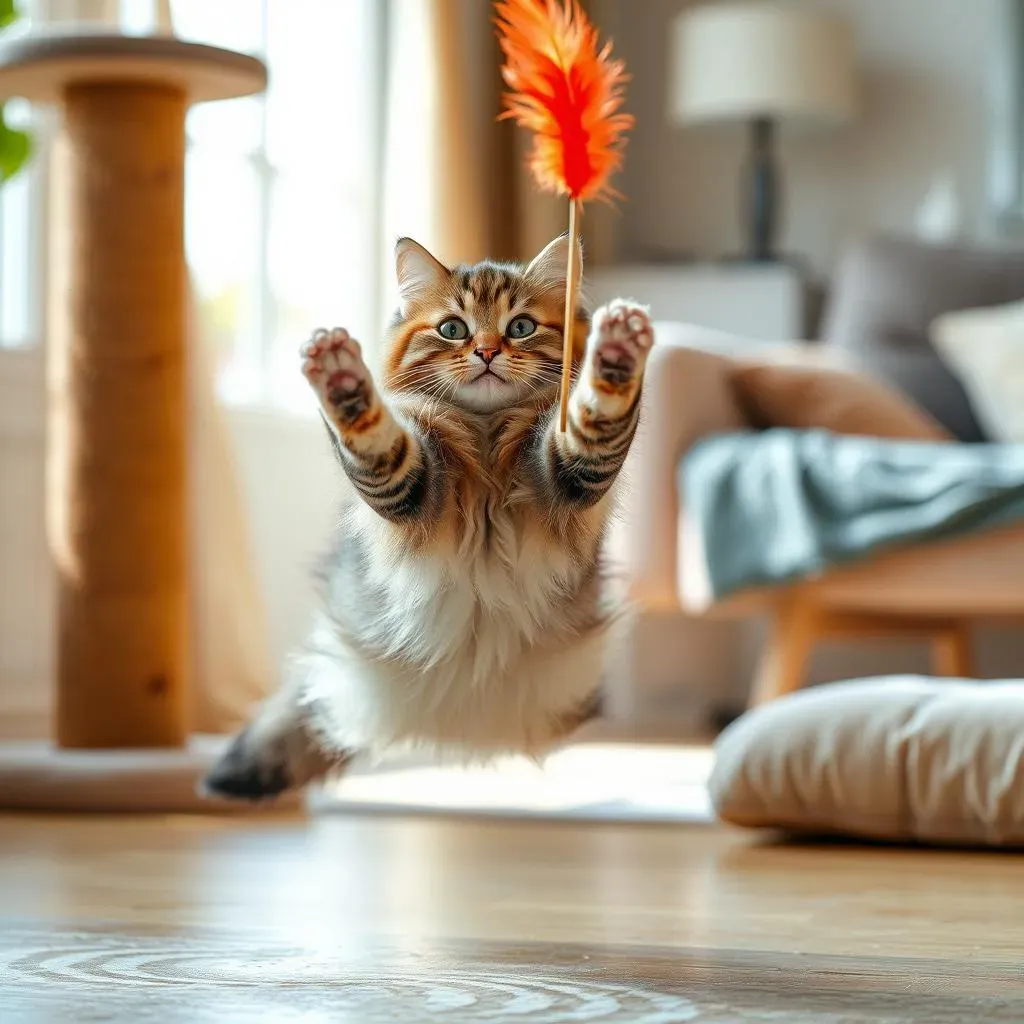
Unleash Your Cat's Inner Hunter: Why Hunting Toys Matter
The Call of the Wild: Understanding the Hunting Instinct
Ever watched your cat fixate on a tiny speck of dust, their eyes laser-focused, their body coiled and ready to spring? That's not just boredom; it's their inner hunter itching to get out. Hunting is a fundamental part of a cat's DNA, a behavior honed over millennia. Even well-fed indoor cats retain this instinct, and suppressing it can lead to a host of problems, from boredom and destructive behavior to anxiety and even depression.
Think of it this way: hunting isn't just about getting food; it's a complex sequence of actions that stimulates their brain, exercises their body, and provides a sense of accomplishment. When a cat successfully "catches" something, whether it's a real mouse or a feathered toy, they experience a release of endorphins that makes them feel good. Denying them this outlet is like denying a musician their instrument or an artist their canvas.
The Boredom Buster: Toys as Hunting Substitutes
So, how do we satisfy this innate need in our domesticated felines? That's where hunting toys come in. These aren't just any toys; they're specifically designed to mimic the movements, textures, and challenges of real prey. From feather wands that mimic the erratic flight of a bird to puzzle toys that require cats to "hunt" for their food, the options are endless.
By providing these outlets, we can redirect their hunting energy away from our ankles, furniture, and other unsuspecting household items. A good hunting toy can provide hours of entertainment, keeping your cat mentally stimulated, physically active, and emotionally content. Plus, it's a whole lot more humane than letting them decimate the local rodent population!
More Than Just Play: The Benefits of Hunting Toys
The benefits of hunting toys extend far beyond simple entertainment. They provide essential mental stimulation, helping to keep your cat's mind sharp and engaged. Interactive toys, in particular, can challenge their problem-solving skills and prevent cognitive decline as they age. Hunting toys also promote physical activity, helping to combat obesity and maintain a healthy weight. The chase, pounce, and wrestle involved in hunting play provide a full-body workout, keeping their muscles toned and their joints flexible.
Furthermore, engaging in hunting play can strengthen the bond between you and your cat. By participating in their "hunt," you're showing them that you understand and support their natural instincts. This shared activity can create a sense of connection and trust, leading to a happier, more fulfilling relationship for both of you.
Benefit | Description |
|---|---|
Mental Stimulation | Keeps the brain active and prevents boredom. |
Physical Exercise | Helps maintain a healthy weight and muscle tone. |
Bonding | Strengthens the relationship between you and your cat. |
Top 10 Best Toys for Cats That Like to Hunt: Our Expert Picks
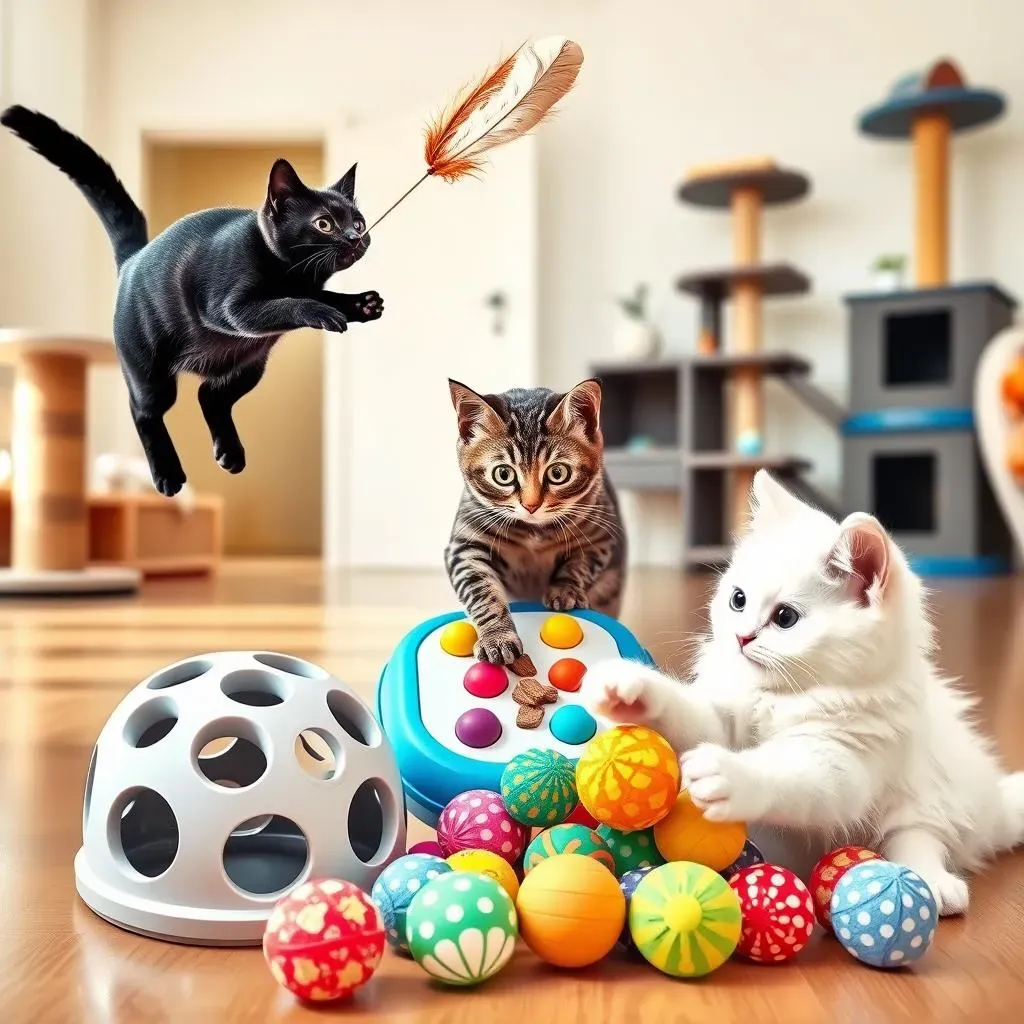
Top 10 Best Toys for Cats That Like to Hunt: Our Expert Picks
Feather Wands: The Classic Chase
Let's kick things off with a classic: the feather wand. These toys are irresistible to most cats, mimicking the erratic flight of a bird. The key is to use it properly. Don't just dangle it in front of their face! Instead, create a realistic hunting scenario. Make the wand "fly" across the floor, hide behind furniture, and occasionally let your cat "catch" it. Variety is key to keeping them engaged. Some wands come with interchangeable attachments, like feathers, ribbons, or crinkle toys, to keep things interesting. It is a really good toy for cats that like to hunt.
My cat, Luna, goes absolutely bonkers for feather wands. I swear, she turns into a tiny panther when she sees it! I like to switch up the attachments to keep her guessing. One day it's feathers, the next it's a sparkly ribbon. Keeps her on her toes (and off my furniture!).
Interactive Food Puzzles: The Mental Workout
Next up, we have interactive food puzzles. These toys combine the thrill of the hunt with the reward of a tasty treat. Cats have to use their problem-solving skills to figure out how to extract the food, engaging their minds and satisfying their natural foraging instincts. There are tons of different types available, from simple rolling puzzles to more complex mazes. Start with an easy one and gradually increase the difficulty as your cat gets the hang of it. Some cats are really good with these.
Don't underestimate the power of a good food puzzle! My friend's cat, Mr. Bigglesworth, was a notorious overeater. She started using a food puzzle to slow him down, and it worked wonders. Not only did he lose weight, but he also seemed much happier and more engaged. It's like he finally had a job to do!
Crinkle Balls and Mice: The Satisfying Capture
Sometimes, the simplest toys are the best. Crinkle balls and plush mice are lightweight, easy to bat around, and provide a satisfying crinkling or squeaking sound when captured. These toys appeal to a cat's natural instinct to chase, pounce, and grab. Look for ones made from durable materials that can withstand some serious abuse. Avoid toys with small parts that could be a choking hazard.
My cats are obsessed with crinkle balls. They love chasing them across the hardwood floors and batting them under the furniture. I swear, they could play with them for hours! Plus, the crinkling sound drives the dog crazy, which is always a bonus.
Toy Type | Description | Benefits |
|---|---|---|
Feather Wands | Mimic the flight of a bird. | Encourages chasing and pouncing. |
Food Puzzles | Dispense treats when solved. | Provides mental stimulation and slows down eating. |
Crinkle Balls | Lightweight balls that make a crinkling sound. | Appeals to chasing and grabbing instincts. |
Decoding the Hunt: Understanding Your Cat's Predatory Sequence
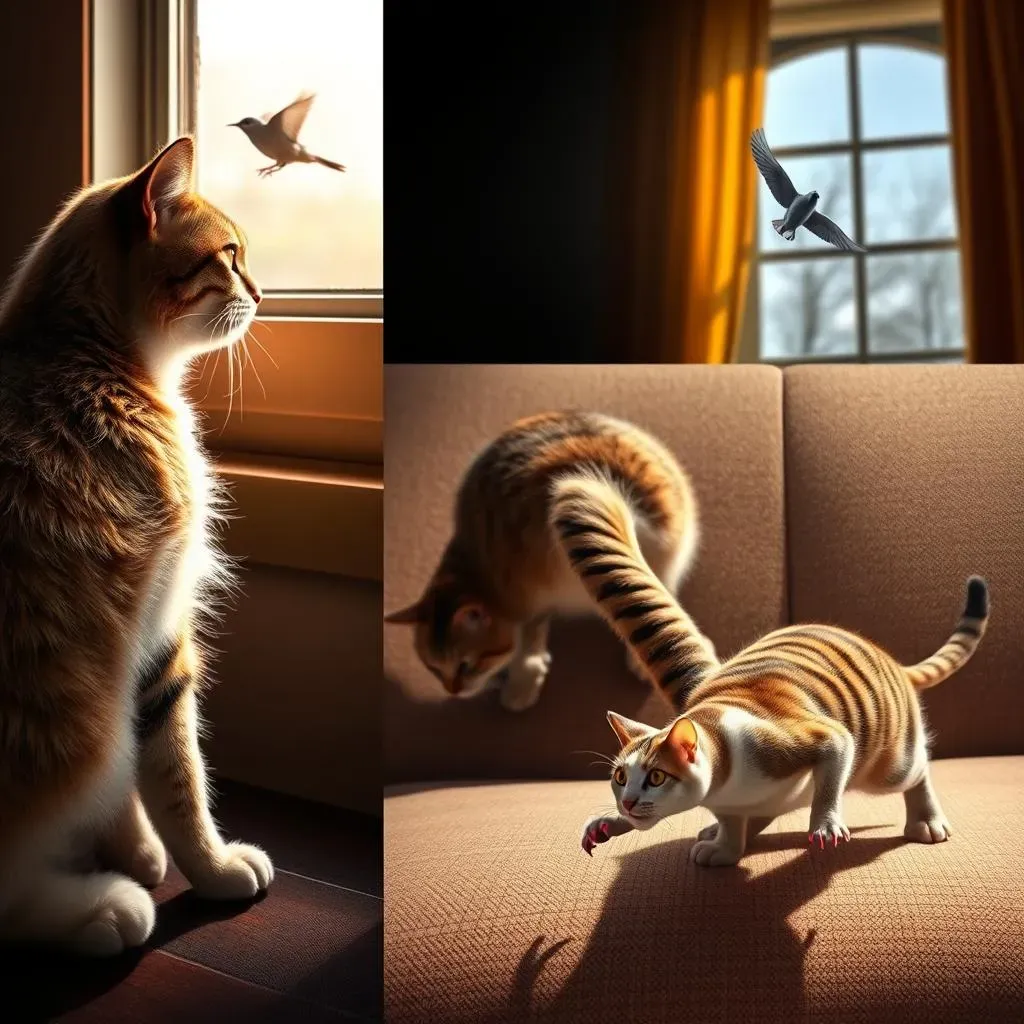
Decoding the Hunt: Understanding Your Cat's Predatory Sequence
The Stare Down: Observation and Focus
Ever notice how your cat can stare at something for what seems like an eternity? It's not just spacing out; it's the first step in their predatory sequence: observation. They're meticulously analyzing their target, assessing its movements, and planning their attack. This stage is all about gathering information and conserving energy. They're like tiny, furry spies, gathering intel before launching their mission. It's fascinating to watch, and it really highlights how much thought goes into their hunting behavior.
Think of it as a chess match. They're not just randomly swatting at things; they're strategically planning their next move. This initial observation phase can last anywhere from a few seconds to several minutes, depending on the cat and the target. The key is patience and focus. They're waiting for the perfect opportunity to strike.
The Creep: Stalking and Positioning
Once they've identified their target and formulated their plan, it's time for the creep: stalking. This is where they lower their body to the ground, moving slowly and deliberately, minimizing their profile. Their tail might twitch slightly, and their pupils dilate as their excitement builds. They're trying to get as close as possible to their prey without being detected.
This stage requires a lot of stealth and agility. They're using their surroundings to their advantage, hiding behind furniture, and using shadows to conceal their movements. It's like watching a tiny, furry ninja in action. The closer they get, the more intense their focus becomes. You can almost feel the anticipation building in the air.
The Pounce: Capture and Satisfaction
Finally, the moment of truth: the pounce! This is the culmination of all their planning and preparation. They explode into action, launching themselves at their target with incredible speed and precision. Their claws extend, and their teeth are ready to deliver the final blow (or, in the case of a toy, a good gnawing). The pounce is all about surprise and efficiency. They want to capture their prey as quickly and cleanly as possible.
Even if it's just a toy, the act of pouncing and "capturing" it provides a huge sense of satisfaction. It's a release of pent-up energy and a confirmation of their hunting prowess. This is why it's so important to let your cat "win" sometimes when playing with them. Let them catch the feather wand or the toy mouse. It reinforces their natural instincts and makes them feel like the skilled hunters they were born to be.
Stage | Description | Key Elements |
|---|---|---|
Observation | Analyzing the target. | Focus, patience, information gathering. |
Stalking | Moving slowly and deliberately. | Stealth, agility, concealment. |
Pounce | Exploding into action. | Speed, precision, capture. |
Beyond the Toy Box: Creating a HuntingEnriched Environment for Your Cat
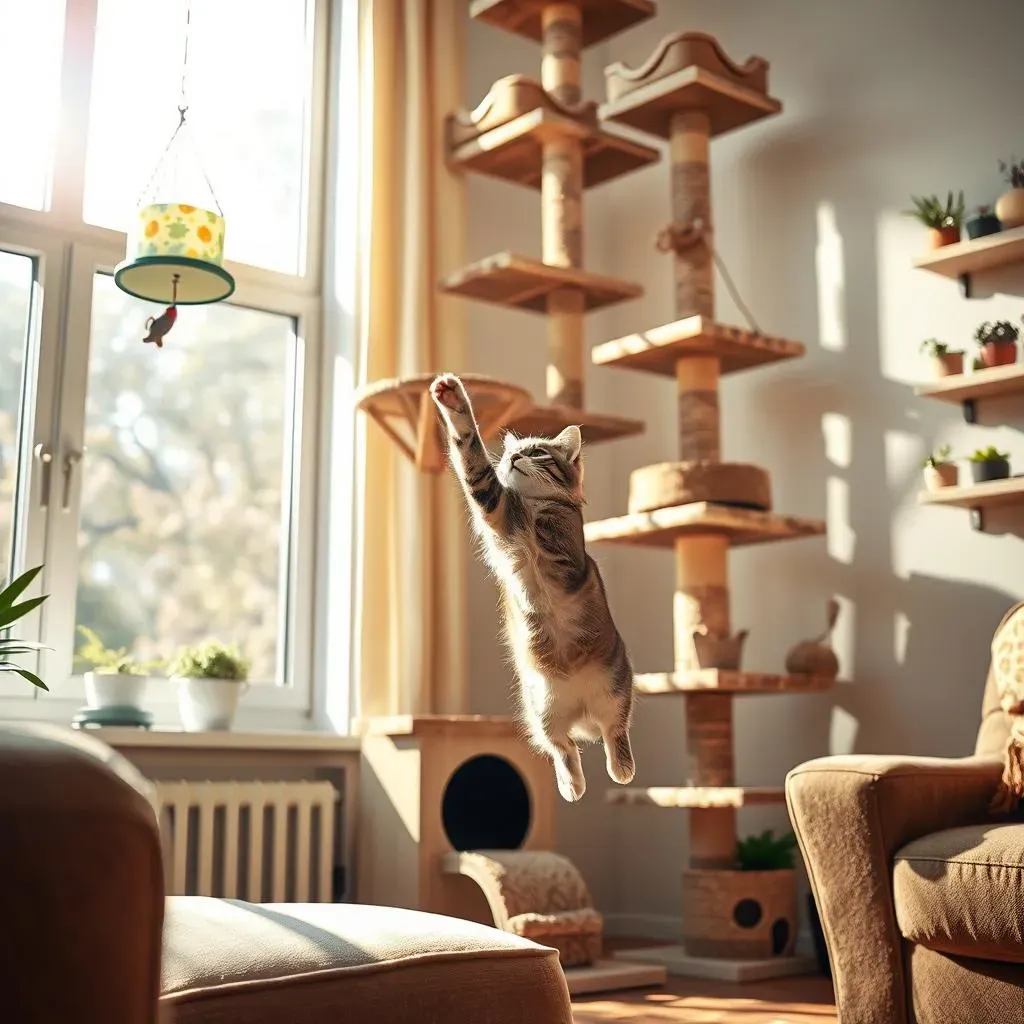
Beyond the Toy Box: Creating a HuntingEnriched Environment for Your Cat
Vertical Territory: Climbing and Perching
Think about where cats naturally hunt: trees, rooftops, any high vantage point. Bringing that vertical element indoors is crucial. Cat trees are the obvious choice, but don't stop there! Shelves mounted on walls, window perches, even sturdy bookcases can become part of your cat's hunting domain. The higher they can climb, the better their view, and the more secure they'll feel. This allows them to survey their territory, spot potential "prey" (toys, sunbeams, whatever!), and plan their next move. It's like giving them their own personal command center.
Consider the placement of these vertical elements. Can your cat easily move between them? Are they close enough to windows for birdwatching? The goal is to create a stimulating and engaging environment that encourages exploration and satisfies their natural desire to climb and perch. My friend Sarah built a whole cat superhighway along her living room walls. Her cats love it! They spend hours climbing, jumping, and surveying their kingdom from above. It's like a feline amusement park in her house.
Sensory Stimulation: Sight, Sound, and Smell
Hunting isn't just about the physical act of chasing and pouncing; it's also about engaging their senses. Provide a variety of sensory experiences to keep their minds sharp and their instincts engaged. Bird feeders outside windows can provide hours of entertainment, as they watch (and plot against) their feathered neighbors. Catnip toys are a classic for a reason – the scent triggers their hunting instincts and gets them moving. And don't forget about texture! Crinkly toys, soft plush mice, and even rough scratching posts can all add to the sensory experience.
Rotating toys regularly is key to preventing boredom and keeping things fresh. Put some toys away for a few weeks and then reintroduce them. It'll be like they're getting a brand new toy! You can also create "hunting zones" in different areas of your home, each with its own unique set of sensory experiences. A sunny window perch with a bird feeder, a quiet corner with a scratching post and catnip toy, a dark hallway for stalking and pouncing – the possibilities are endless. Get creative and tailor the environment to your cat's individual preferences.
Environmental Enrichment | Description | Benefits |
|---|---|---|
Vertical Territory | Cat trees, shelves, window perches. | Provides a sense of security and allows for surveying. |
Sensory Stimulation | Bird feeders, catnip toys, textured surfaces. | Engages their senses and prevents boredom. |
Choosing the Best Toys for Cats That Like to Hunt: A Buyer's Guide
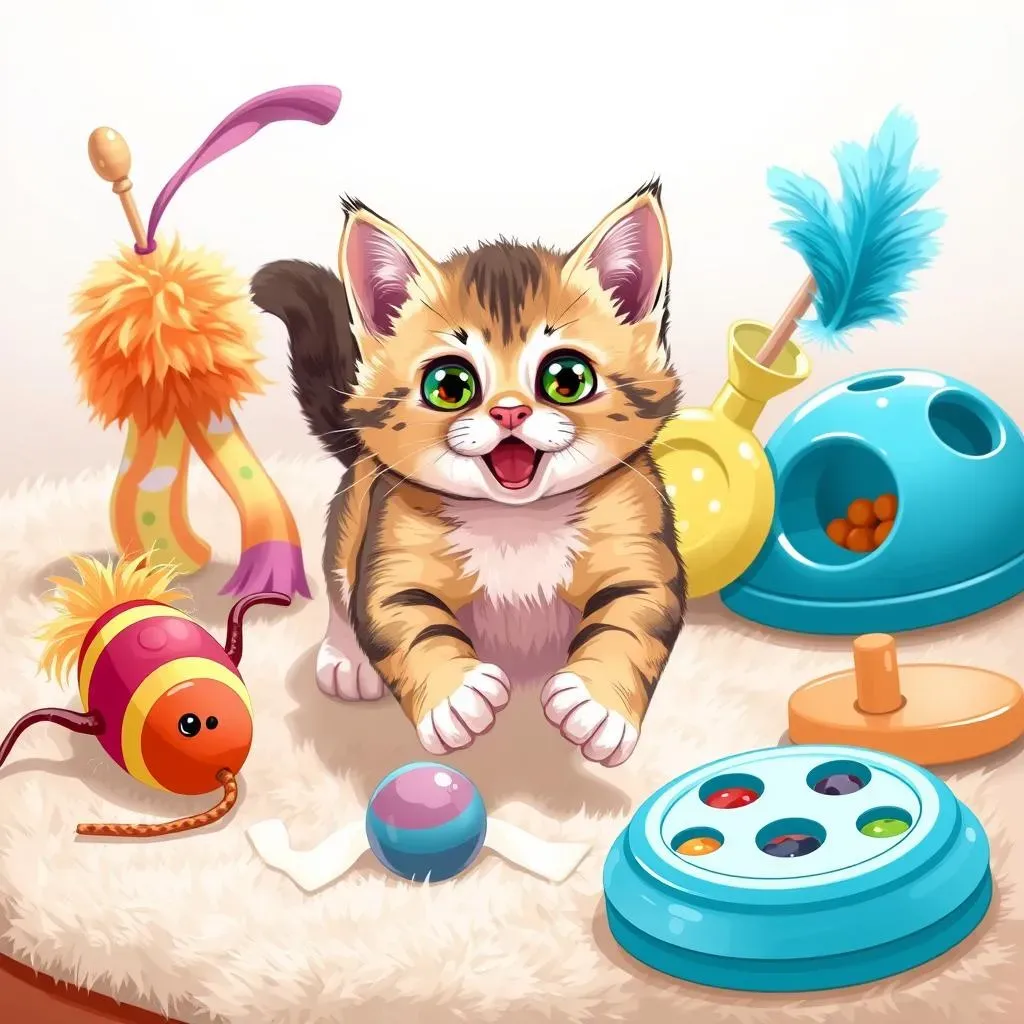
Choosing the Best Toys for Cats That Like to Hunt: A Buyer's Guide
Material Matters: Safety and Durability
so you're ready to dive into the world of hunting toys, but where do you even start? First things first: material. You want something that's going to stand up to some serious abuse, because trust me, your cat will put it through the wringer! Look for durable, non-toxic materials that can withstand scratching, biting, and general mayhem. Avoid anything with small parts that could be easily swallowed. Safety is always the top priority. Think about it – would you give a toddler a toy made of flimsy plastic? Same principle applies here. Cats explore with their mouths, so you need to be extra cautious about what they're gnawing on.
Natural materials like cotton, wool, and wood are generally good choices, but make sure they're untreated and free of dyes or chemicals. Plastic toys should be BPA-free and made from a sturdy, shatter-resistant material. And always supervise your cat during playtime, especially when introducing a new toy. That way, you can quickly intervene if something seems off or if they start to destroy the toy in a potentially dangerous way. Remember, a little bit of research goes a long way in keeping your furry friend safe and happy!
Size and Shape: Appealing to Their Prey Drive
Next up, consider the size and shape of the toy. Think about the kind of prey your cat would naturally hunt. Mice, birds, insects – they all have different shapes and sizes. Choose toys that mimic these natural prey items to really appeal to their hunting instincts. Small, lightweight toys are great for batting around and chasing, while larger toys are good for wrestling and bunny-kicking. Varying the size and shape of the toys you offer can keep things interesting and prevent boredom. My cat, Whiskers, loves these little mouse-shaped toys that are just the right size for her to carry around in her mouth. It's like she's showing off her latest kill!
Also, think about the texture of the toy. Some cats prefer soft, plush toys, while others prefer rough, crinkly ones. Experiment with different textures to see what your cat likes best. Toys with feathers or fur can be particularly appealing, as they mimic the feel of real prey. Just make sure the feathers are securely attached and won't come loose. The goal is to find toys that engage their senses and stimulate their natural hunting behaviors. It's all about tapping into their inner predator!
Interactive Features: Engaging Their Minds
Now, let's talk about interactive features. These are the bells and whistles that can really take a hunting toy to the next level. Think about toys that move, make noise, or require your cat to solve a puzzle to get a reward. Laser pointers are a classic example, but use them with caution! They can be frustrating for some cats, as they never actually get to "catch" the laser. A better option is a toy that you can control remotely, like a robotic mouse or a feather wand on a string. This allows you to create a more realistic hunting scenario and give your cat a satisfying "catch" at the end.
Food puzzles are another great option for engaging their minds. These toys require your cat to use their problem-solving skills to extract treats or kibble. They come in all shapes and sizes, from simple rolling puzzles to more complex mazes. Start with an easy one and gradually increase the difficulty as your cat gets the hang of it. Interactive toys not only provide mental stimulation but also help to slow down eating and prevent boredom. It's a win-win!
Factor | Considerations |
|---|---|
Material | Durable, non-toxic, safe. |
Size & Shape | Mimic natural prey, vary sizes. |
Interactive Features | Movement, sound, puzzles. |
Unleash the Pounce: Satisfying Your Cat's Hunting Instincts
Investing in the best toys for cats that like to hunt isn't just about keeping them entertained; it's about nurturing their natural instincts and enriching their lives. By understanding their predatory sequence and providing stimulating play opportunities, you're helping them stay physically active, mentally sharp, and emotionally balanced. So, ditch the boring catnip mice and embrace the thrill of the hunt! Your feline friend will thank you with purrs, playful pounces, and maybe even a well-deserved "kill" or two (on their favorite toy, of course!).